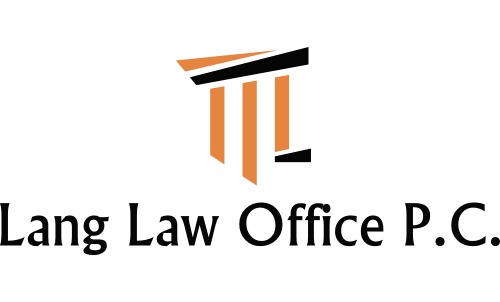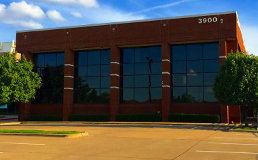Cost is defined as all costs that were necessary to get the asset in place and ready for use. However, its simplicity can also be a drawback, because the useful life calculation is largely based on guesswork or estimation. It also does not factor in the accelerated loss of an asset’s value in the short term or the likelihood that maintenance costs will go up as the asset gets older. For example, if a company buys a delivery van costing $100,000 and it is expected to be used for 5 years, the company might have a depreciation expense of $20,000 in each of the five years.
- It can be applied to tangible assets, of which the values decrease as they are used up.
- It results in fewer errors, is the most consistent, and transitions well from company-prepared statements to tax returns.
- The two most common ways to determine the depreciation are straight-line and accelerated methods.
- It doubles the (1/Useful Life) multiplier, making it essentially twice as fast as the declining balance method.
- Governments around the world are rolling out new requirements for E-invoicing, real-time reporting, and other data-intensive tax initiatives.
- If we were not to use depreciation at all, then we would be forced to charge all assets to expense as soon as we buy them.
Our partners cannot pay us to guarantee favorable reviews of their products or services. https://online-accounting.net/ We believe everyone should be able to make financial decisions with confidence.
Methods of Depreciation
This allows the company to write off an asset’s value over a period of time, notably its useful life. An entry is made to the depreciation expense account, offsetting the credit to the accumulated depreciation account. The accumulated depreciation account, which offsets the fixed assets account, is considered a contra asset account. The term ‘depreciate’ means to diminish something value over time, while the term ‘amortize’ means to gradually write off a cost over a period. Conceptually, depreciation is recorded to reflect that an asset is no longer worth the previous carrying cost reflected on the financial statements.
- The asset’s cost is usually spread over the years in which the asset is used.
- Companies may utilize this strategy for taxation purposes, as an accelerated depreciation method will result in a deferment of tax liabilities since income is lower in earlier periods.
- The purpose of depreciation is to achieve the matching principle of accounting.
- Depreciation expenses don’t involve the exchange of cash; they’re solely done for accounting purposes.
- Each year when the truck is depreciated by $10,000, the accounting entry will credit Accumulated Depreciation – Truck (instead of crediting the asset account Truck).
- There are several allowable methods of depreciation, which will lead to different rates of depreciation, as well as different depreciation expenses for each period.
You, the bookkeeper, record the full transaction when the asset is bought, but the value of the asset is gradually reduced by subtracting a portion of that value as a depreciation expense each year. Business can use some discretion https://turbo-tax.org/ in applying the above methods or internal use, but the IRS specifies how they will calculate depreciation when filing tax returns. It assigns asset to specific classes, which determines the asset’s useful life.
What to know about claiming dependents on taxes
Straight-line depreciation is a good option for small businesses with simple accounting systems or businesses where the business owner prepares and files the tax return. It splits an asset’s value equally over multiple years, meaning you pay the same amount for every year of the asset’s useful life. The number of years over https://quickbooks-payroll.org/ which an asset is depreciated is determined by the asset’s estimated useful life, or how long the asset can be used. For example, the estimate useful life of a laptop computer is about five years. The second aspect is allocating the price you originally paid for an expensive asset over the period of time you use that asset.
You’re our first priority.Every time.
Depreciation quantifies the declining value of a business asset, based on its useful life, and balances out the revenue it’s helped to produce. Because you’ve taken the time to determine the useful life of your equipment for depreciation purposes, you can make an educated assumption about when the business will need to purchase new equipment. The earlier you can start planning for that purchase — perhaps by setting aside cash each month in a business savings account — the easier it will be to replace the equipment when the time comes. Here are four common methods of calculating annual depreciation expenses, along with when it’s best to use them.
Depreciation expenses are subtracted from the company’s revenue as a part of the net income calculations. The purpose of depreciation is to match the cost of a productive asset, that has a useful life of more than a year, to the revenues earned by using the asset. The asset’s cost is usually spread over the years in which the asset is used. Over the asset’s useful life, depreciation systematically moves the asset’s costs from the balance sheet to expenses on an income statement. The method of accounting used to allocate the cost of a tangible asset over its useful life and is used to account for declines in value is called depreciation. Business can deduct the cost of the tangible asset they purchase off their taxes but how and when the company can deduct depreciation is dictated by IRS rules.
As the depreciation expense is constant for each period, the depreciated cost decreases at a constant rate under the straight-line depreciation method. In accounting, depreciation is an accounting process of reducing the cost of a physical asset over the asset’s useful life to mirror its wear and tear. It can be applied to tangible assets, of which the values decrease as they are used up. Buildings, vehicles, computers, equipment, and computers are some other examples of depreciable assets. To illustrate an Accumulated Depreciation account, assume that a retailer purchased a delivery truck for $70,000 and it was recorded with a debit of $70,000 in the asset account Truck.
Partial Year Depreciation
Based on these assumptions, the depreciable amount is $4,000 ($5,000 cost – $1,000 salvage value). In this case, the asset continues to appear at its original cost in the books. We show the Provision for Depreciation A/c as a deduction from the asset in the Balance Sheet. Alternatively, we can also show the Provision for Depreciation A/c on the liabilities side in the Balance Sheet. If you purchase a vehicle, it immediately depreciates or loses value once it leaves the lot.
On the other hand, a larger company might set a $10,000 threshold, under which all purchases are expensed immediately. The main purpose of the concept of depreciation and its accounting is the allocation of the cost of a fixed asset. Hence, the funds that we charge to the Profit and Loss A/c every year remain in the business itself and thus, we can use them at the time of replacement of the asset. On purchasing a fixed asset we record it at its original cost or purchase price in the books of accounts. An organization uses this fixed asset to earn or generate revenues for a number of accounting years until it sells or discards the asset.
Meanwhile, amortization is recorded to allocate costs over a specific period of time. An asset is depreciated faster with higher depreciation expenses in the earlier years, compared with the straight-line method. Sum of the years’ digits depreciation is another accelerated depreciation method. It doesn’t depreciate an asset quite as quickly as double declining balance depreciation, but it does it quicker than straight-line depreciation. The double-declining balance (DDB) method is an accelerated depreciation method.



